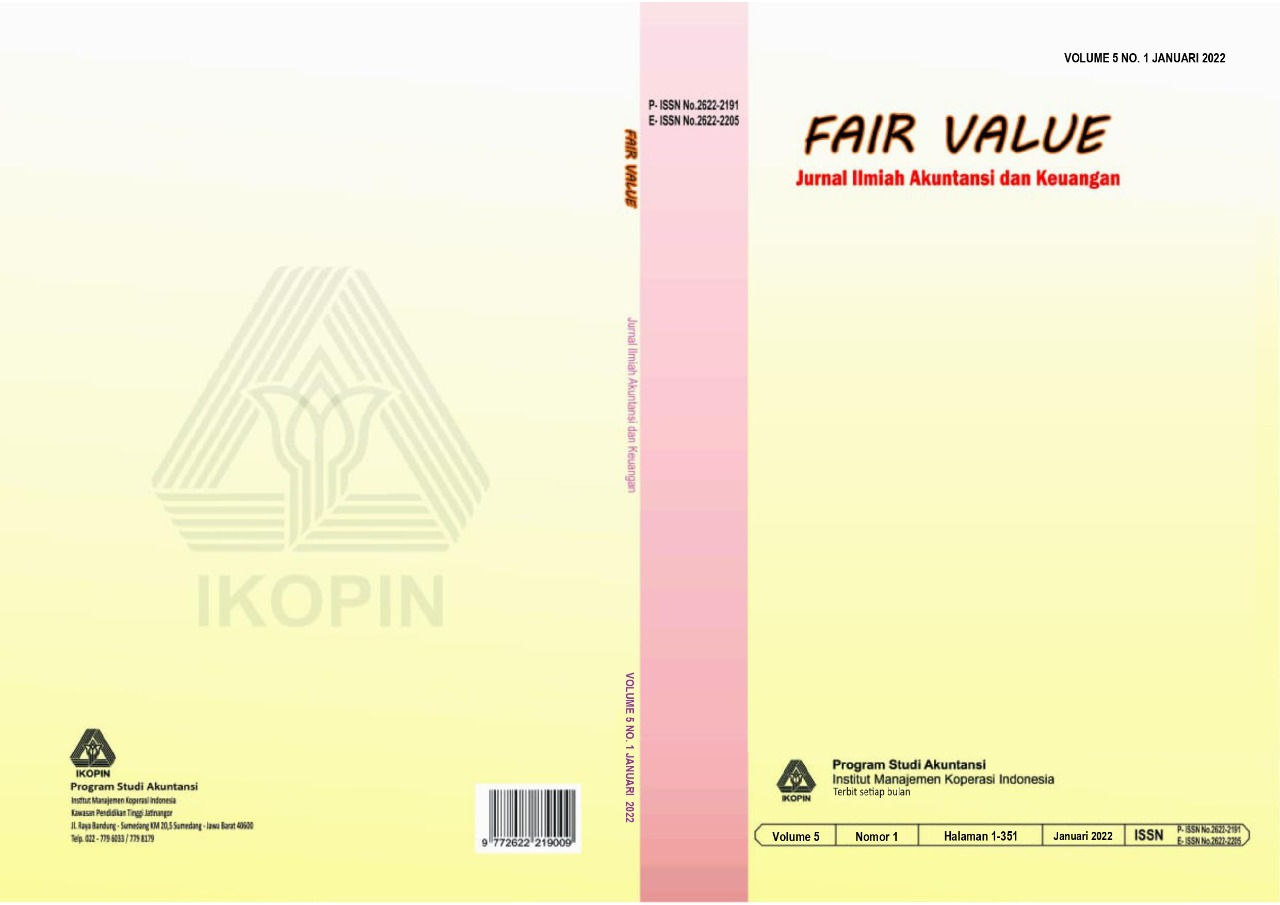Determinan debt behavior pengguna platform peer-to-peer lending
Main Article Content
Abstract
This study aims to examine the effect of financial literacy and financial behavior on debt behavior using a peer-to-peer lending platform. An associative-quantitative research design will be used in this investigation. This study used an online questionnaire, which was distributed to 100 respondents from MSME owners in the garment industry who have used or are currently using a peer-to-peer lending platform with a maximum turnover of $50 billion per year. The research data were analyzed using a structural equation model approach with the PLS (partial least squares) method. The results of this study indicate that financial literacy and financial behavior have a significant effect on debt behavior when using a peer-to-peer lending platform. Therefore, MSME owners need to understand the characteristics and funding through appropriate peer-to-peer lending according to their needs. Meanwhile, the manager of the peer-to-peer lending platform can consider the factors that affect performance and the need to continuously improve the performance of the peer-to-peer lending platform.
Article Details
References
Deloitte. (2019). Deloitte report: SMEs powering Indonesia’s success. http://www.deloitte.com/au/economics
Dorfleitner, G., Hornuf, L., Schmitt, M., & Weber, M. (2017). The finTech market in Germany BT (pp. 13–46). Springer International Publishing. https://doi.org/10.1007/978-3-319-54666-7_4
Hsueh, S.-C., & Kuo, C.-H. (2017). Effective matching for P2P lending by mining strong association rules. Proceedings of the 3rd International Conference on Industrial and Business Engineering, 30–33. https://doi.org/https://doi.org/10.1145/3133811.3133823
Kenton, W. (2020). Corporate finance & accounting financial analysis. Idle Time. https://gcwgandhinagar.com/econtent/document/1589187524Unit 3, cost accounting, sem 4.pdf
Lee, D. K. C., & Low, L. (2018). Inclusive fintech: blockchain, cryptocurrency and ICO. World Scientific.
Mahyarni, M. (2013). Theory of reasoned action dan theory of planned behavior. Jurnal El-Riyasah, 4(1), 13–23. https://doi.org/http://dx.doi.org/10.24014/jel.v4i1.17
Margaretha, F., & Pambudhi, R. A. (2015). Tingkat literasi keuangan pada mahasiswa S-1 fakultas ekonomi. Jurnal Manajemen dan Kewirausahaan, 17(1), 76–85. https://doi.org/https://doi.org/10.9744/jmk.17.1.76-85
Mutia, K. F., & Wahyuni, M. A. (2018). Pengaruh sensitivitas industri, kepemilikan saham publik, ukuran dewan komisaris, dan leverage terhadap pengungkapan kinerja ekonomi, sosial dan lingkungan pada perusahaan yang terdaftar pada Indeks Sri Kehati periode 2013-2017. JIMAT (Jurnal Ilmiah Mahasiswa Akuntansi) Undiksha, 9(3), 13–25. https://doi.org/https://doi.org/10.23887/jimat.v9i3.20415
Nengtyas, R. S. (2019). Pengaruh literasi keuangan, religiusitas dan gaya hidup terhadap perilaku pengelolaan utang masyarakat di Surabaya (Tesis). STIE Perbanas Surabaya. http://eprints.perbanas.ac.id/id/eprint/4759
Novitasari, D. (2021). Pengaruh literasi keuangan dan perilaku keuangan terhadap perilaku pengelolaan utang (Tesis). Unisnu Jepara. http://eprints.unisnu.ac.id/id/eprint/1321
PwC. (2019). Indonesia’s Fintech lending: Driving economic growth through financial inclusion. PwC. https://www.pwc.com/id/en/FinTech/PwC_FinTechLendingThoughtLeadership_ExecutiveSummary.pdf
Richardson, T., Elliott, P., & Roberts, R. (2013). The relationship between personal unsecured debt and mental and physical health: A systematic review and meta-analysis. Clinical Psychology Review, 33(8), 1148–1162. https://doi.org/https://doi.org/10.1016/j.cpr.2013.08.009
Rosavina, M., Rahadi, R. A., Kitri, M. L., Nuraeni, S., & Mayangsari, L. (2019). P2P lending adoption by SMEs in Indonesia. Qualitative Research in Financial Markets, 11(2), 260–279. https://doi.org/https://doi.org/10.1108/QRFM-09-2018-0103
Saini, R. K. (2016). Role of Peer to Peer lending for growth of MSME’s in India. BVIMSR’s Journal of Management Research, 8(1), 116–121. https://www.proquest.com/docview/1959181409?pq-origsite=gscholar&fromopenview=true
Sasongko, D. (2020). UMKM bangkit, ekonomi Indonesia terungkit. Kementerian Keuangan Republik Indonesia. https://www.djkn.kemenkeu.go.id/artikel/baca/13317/UMKM-Bangkit-Ekonomi-Indonesia-Terungkit.html
Shohib, M. (2015). Sikap terhadap uang dan perilaku berhutang. Jurnal Ilmiah Psikologi Terapan, 3(1), 132–143. https://doi.org/https://doi.org/10.22219/jipt.v3i1.2133

